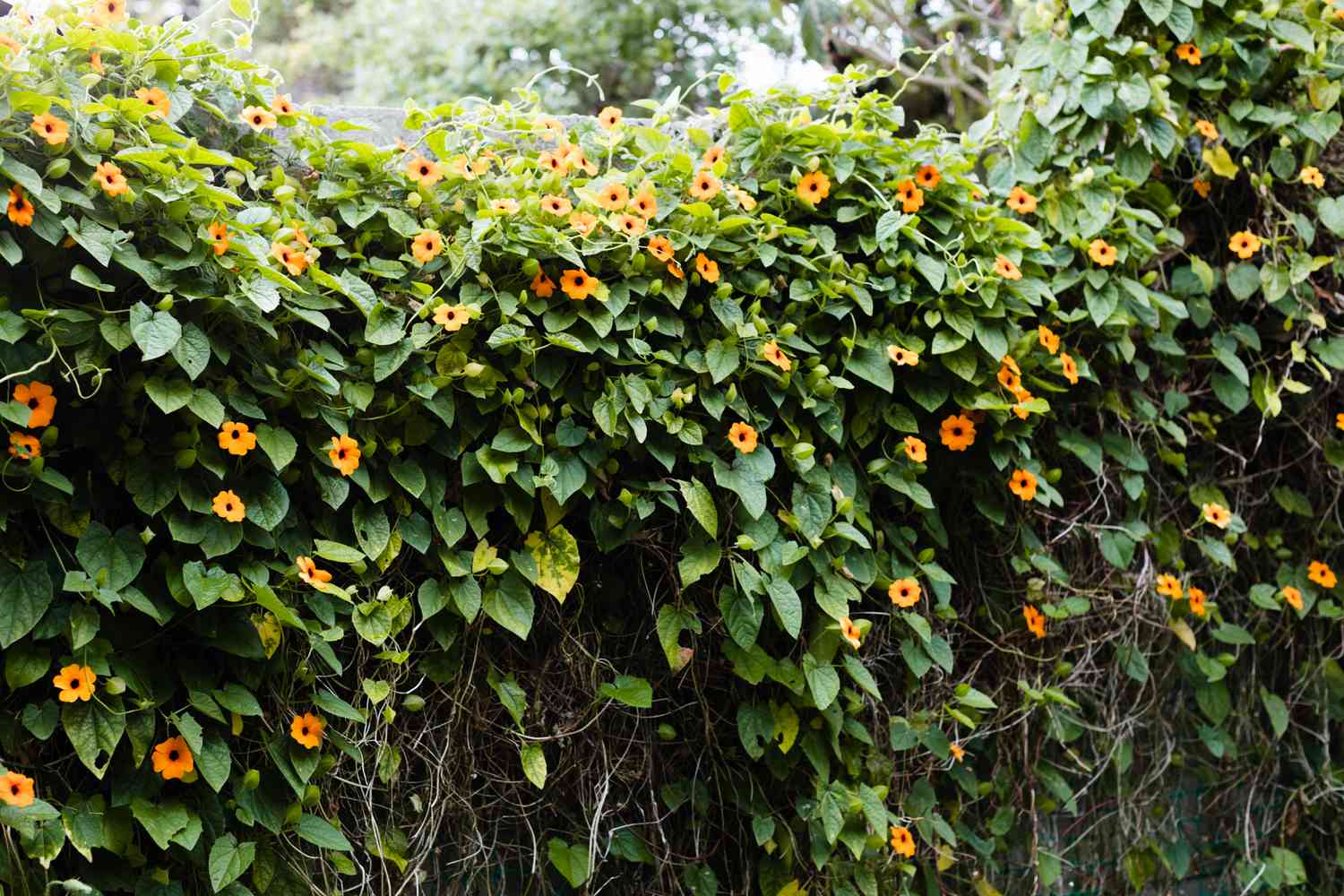
Black-Eyed Susan Vine is a charming plant that can add a splash of color to any garden. Known for its vibrant yellow, orange, or white flowers with a distinctive dark center, this vine is a favorite among gardeners. But what makes it so special? Black-Eyed Susan Vine is not just beautiful; it's also easy to grow and care for, making it perfect for both novice and experienced gardeners. Whether you're looking to cover a trellis, fence, or simply want a stunning hanging basket, this plant can do it all. Ready to learn more about this versatile and eye-catching vine? Let's dive into 15 fascinating facts that will help you appreciate the Black-Eyed Susan Vine even more.
Key Takeaways:
- Black-Eyed Susan Vine, also known as Thunbergia alata, is a fast-growing plant with vibrant flowers that can reach 6 to 8 feet in a single season. It thrives in full sun, making it perfect for trellises, hanging baskets, and even indoor decor.
- This versatile vine not only adds beauty to your garden but also attracts pollinators like bees and butterflies. It can grow rapidly, self-seed in warmer climates, and has been used in traditional medicine for various purposes.
What is Black-Eyed Susan Vine?
The Black-Eyed Susan Vine is a popular climbing plant known for its vibrant flowers and rapid growth. Native to tropical regions of Africa, this vine can add a splash of color to any garden or indoor space.
- Scientific Name: The Black-Eyed Susan Vine's scientific name is Thunbergia alata. It belongs to the Acanthaceae family.
- Flower Colors: These vines produce flowers in various colors, including yellow, orange, white, and cream, all with a characteristic dark center.
- Growth Habit: This plant is a fast-growing climber, often reaching heights of 6 to 8 feet in a single growing season.
- Annual or Perennial: In tropical climates, the Black-Eyed Susan Vine is a perennial. However, in cooler regions, it is typically grown as an annual.
How to Grow Black-Eyed Susan Vine
Growing this vine is relatively easy, making it a favorite among gardeners. Here are some essential tips for cultivating a healthy Black-Eyed Susan Vine.
- Sunlight Requirements: This vine thrives in full sun but can tolerate partial shade. More sunlight results in more vibrant blooms.
- Soil Preferences: It prefers well-drained soil rich in organic matter. Adding compost can improve soil quality.
- Watering Needs: Regular watering is crucial, especially during dry spells. However, avoid waterlogging, which can harm the roots.
- Temperature Tolerance: Ideal growing temperatures range from 60°F to 75°F. Frost can damage or kill the plant.
Uses of Black-Eyed Susan Vine
This versatile plant can be used in various ways to enhance your garden or home. Its beauty and adaptability make it a valuable addition to any space.
- Garden Decor: The vine is perfect for trellises, arbors, and fences, creating a stunning vertical display.
- Hanging Baskets: It also looks beautiful in hanging baskets, where its trailing vines can cascade down.
- Indoor Plant: With proper care, the Black-Eyed Susan Vine can be grown indoors, adding a touch of nature to your home decor.
- Pollinator Attraction: The flowers attract bees, butterflies, and other pollinators, promoting a healthy garden ecosystem.
Interesting Facts About Black-Eyed Susan Vine
Beyond its beauty and ease of growth, the Black-Eyed Susan Vine has some fascinating characteristics that make it unique.
- Rapid Growth: This vine can grow several inches in a single day under optimal conditions.
- Self-Seeding: In warmer climates, the plant can self-seed, coming back year after year without replanting.
- Medicinal Uses: In traditional medicine, parts of the plant have been used to treat various ailments, although scientific evidence is limited.
Final Thoughts on Black-Eyed Susan Vine
Black-Eyed Susan Vine is a charming addition to any garden. Its vibrant blooms and easy care make it a favorite among gardeners. This plant isn't just pretty; it's also versatile. You can grow it in hanging baskets, on trellises, or even as ground cover. Plus, it attracts pollinators like bees and butterflies, adding life to your garden.
Remember, this vine loves sunlight and well-drained soil. Regular watering and occasional pruning will keep it healthy and flourishing. Whether you're a seasoned gardener or a newbie, Black-Eyed Susan Vine is a great choice. Its bright flowers and lush foliage will bring joy and color to your outdoor space. So, if you're looking to add a splash of color and a touch of nature to your garden, consider planting Black-Eyed Susan Vine. You won't be disappointed!
Frequently Asked Questions
Was this page helpful?
Our commitment to delivering trustworthy and engaging content is at the heart of what we do. Each fact on our site is contributed by real users like you, bringing a wealth of diverse insights and information. To ensure the highest standards of accuracy and reliability, our dedicated editors meticulously review each submission. This process guarantees that the facts we share are not only fascinating but also credible. Trust in our commitment to quality and authenticity as you explore and learn with us.


